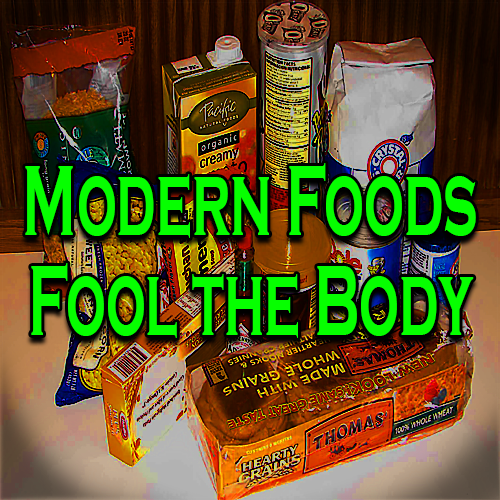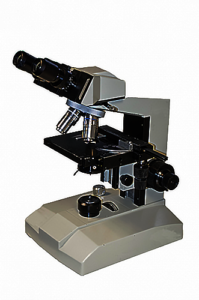Modern Foods Fool the Body

Modern foods fool the body in different ways.
Modern Foods
Wonderful modern foods.
Delicious.
Maybe not nutritious.
Strange calories.
My body doesn’t recognize,
It stores.
As fat.
Maybe cellulite—
This improved food.
Maybe I should I be.
Eternally hungry.
A portion does not stand-alone.
Nearly impossible to quantify.
An hundred trillion cells.
Crying out for nutrition.
Nature knows what I don’t.
Barefoot dining says—basic foods.
Hippocrates says let your food be your medicine.
Einstein said that folly is doing the same thing over and expecting differing results. Dieters never get the point.
Changes In Our Diet
Since WW11 our food has changed and we have gained weight. The type and makeup of our food might be more at fault than the amount we eat. Additionally, we must confront the strong possibility that much of what we’ve come to believe is wrong. If we are eating the wrong foods, portion control is not going to solve our weight problem. (Good Calories Bad Calories epilogue p457.)
Trying to get a grasp on how many calories there is in one of our “at-the-table” portions of food is futile. Portions are difficult to quantify—if not impossible. Also, they vary too much. Calories are too small to comprehend. Furthermore, they hide sometimes in plain sight.
What Is A Portion?
How big is a portion? Some experts say “as big as my fist.” However, my contention is that we must first take into account the calories, nutrients and “recognition factor” in the fistful. If the body can’t recognize certain modern fats or sugars it may store them as fats to get them out of the blood. As a matter of fact, they are stored as fat—especially on our thighs and midsection—indefinitely.
A portion does not stand alone. Some experts say to measure by weight or by volume. How many potato chips? The bag says eleven chips—not all the same size. However, other experts say the type of oil used and the type of soil they were grown in is important. We need to “chuck it all” and use some of our own rational. Anyway, portion size and count should take a back seat to finding foods loaded with nutrients that our bodies need.
Understanding Nutrients
Nutrients combine with other nutrients to create more than the sum of their parts. Phytonutrients (plant nutrients) from fruits and vegetables, along with our digestive processes, interact to alter the nutritional value of the total. An example is cooking tomatoes with olive oil makes Lycopene more available. (Foods to Fight Cancer P.134)
A better thought may be to crowd out the undesirables than to try to starve ourselves into health. Crowd them out by eating phytonutrients instead of carbohydrates and fats. Also, eat a wide variety of ‘whole foods,’ —especially raw or minimally cooked foods. Eat brightly colored fruits and vegetables. Some anticancer compounds in the cabbage family are produced when we are actually doing the chewing and they are greatly altered by cooking. (Foods to Fight Cancer P75)
The practice of “Barefoot dining,” eating whole foods and avoiding the vast array of chemicals that is put into our food, seems to be a healthy method of eating. Perhaps, over time, this can eliminate the need for most—if not all—medications. If we refuse to control our own diet we will rely on others to do it for us. We are talking about attitude change that leads to habit change and selecting foods that we probably already know are the right things to eat.
Counting Calories
Calorie restriction is not the key to a healthy, happy life. It’s hard to enjoy life when your hundred trillion cells are screaming for nutrition. Furthermore, if we eat the right food, we can eat to our hearts content and not get fat—no gorging please. This does not mean that we do not need to exercise our bodies to stay healthy. Exercise is good and must be considered, but let’s concentrate on portion control for this moment.
Many of us have an addiction to carbohydrates in modern foods that is caused by an over reliance on starches like pastas, breads, cereals and white potatoes which takes a year to eighteen months to subdue. (Retraining the Brain, by Dr. Jeffery Schwartz) (Good Calories Bad Calories p.446)
Molecular Biology

Microscope For Molecular Biology
The new field of molecular biology is upsetting our old understanding of our food requirements. With today’s high-powered electron microscopes and computer technology we can see inside an individual cell and try to understand what its tiny power plant (mitochondrion) is doing. There is an estimated five-to-seven million events taking place at any time in each of these “little factories” as it sends messengers for its required nutrients, does repairs and communicates with the body, brain and other cells. Homeostasis says the cells work in unison to maintain the body as a whole unit—even to maintaining body temperature. We eat to supply these denizens with their micronutrients—tiny things that are abundant in raw foods and things like raw vinegar. (Good Calories Bad Calories p. 142)
Probiotics And Trace Elements
The emerging field of “Probiotics” is showing us that there are several hundred billion bacteria in our gut that thrive on the food that we eat. We don’t know how many calories they consume from our partially digested food. They help process our food and create vitamins like B12, which is not found in any plant source. We know that without them we would die—better that we feed them some calories. Give them the wrong modern foods and our out-gassing will disturb our olfactory nerves. (Bacteria for Breakfast p 31)
And then there is the arena of trace elements, an almost endless array of tiny things like copper, chromium, silver and zinc that medical science is struggling to understand. We know they are crucial to our health. We find these in brightly colored fruits and vegetables. Cooking destroys many of these trace elements. An example is the small amount of iodine added back into our table our salt (by government edict) to prevent goiters.
Stored Energy And Modern Foods
Between meals, we rely on stored energy. If the stored energy is not what our cells are calling for—we get hungry, even if we are fat. One school of thought says that manufactured foods like some of today’s manufactured oils are not recognized by the body and are sent into fat storage to get them out of our blood and they are never recalled. (GcBc) (Cleveland Clinic)
Our bodies accumulate fat until a point of equilibrium is reached, and then tend to stabilize. Otherwise, we’d grow until we burst. At what point does the body ignore portion size––and ignore calorie counting? Some latent intelligence must be at work.
Portion Control Not Calorie Control
We don’t have the wisdom or the wherewithal to count the exact number of calories in a portion. There are too many variables and hidden factors. The only answer that I can come up with is to eat the foods that are compatible with my bodies needs.
Better to avoid that which causes me problems than to try to measure the portions that are causing me problems.
Two thousand years ago Hippocrates said that food should be our medicine and our medicine should be our food.
Fifty years ago a glass of tomato juice or orange juice was about four ounces. We have enlarged our drinking glasses, and our coffee mugs are now two or three cups. We do need to keep portions under control.
{To get a better grasp of this chapter and to avoid repetition, read it in conjunction with the chapters on: Calorie Counting, Carbohydrates, Whole foods, Re-educating our taste, buds.}
| Tags | Category | Author |
|---|---|---|
| Tags: Nutrition | jerry |